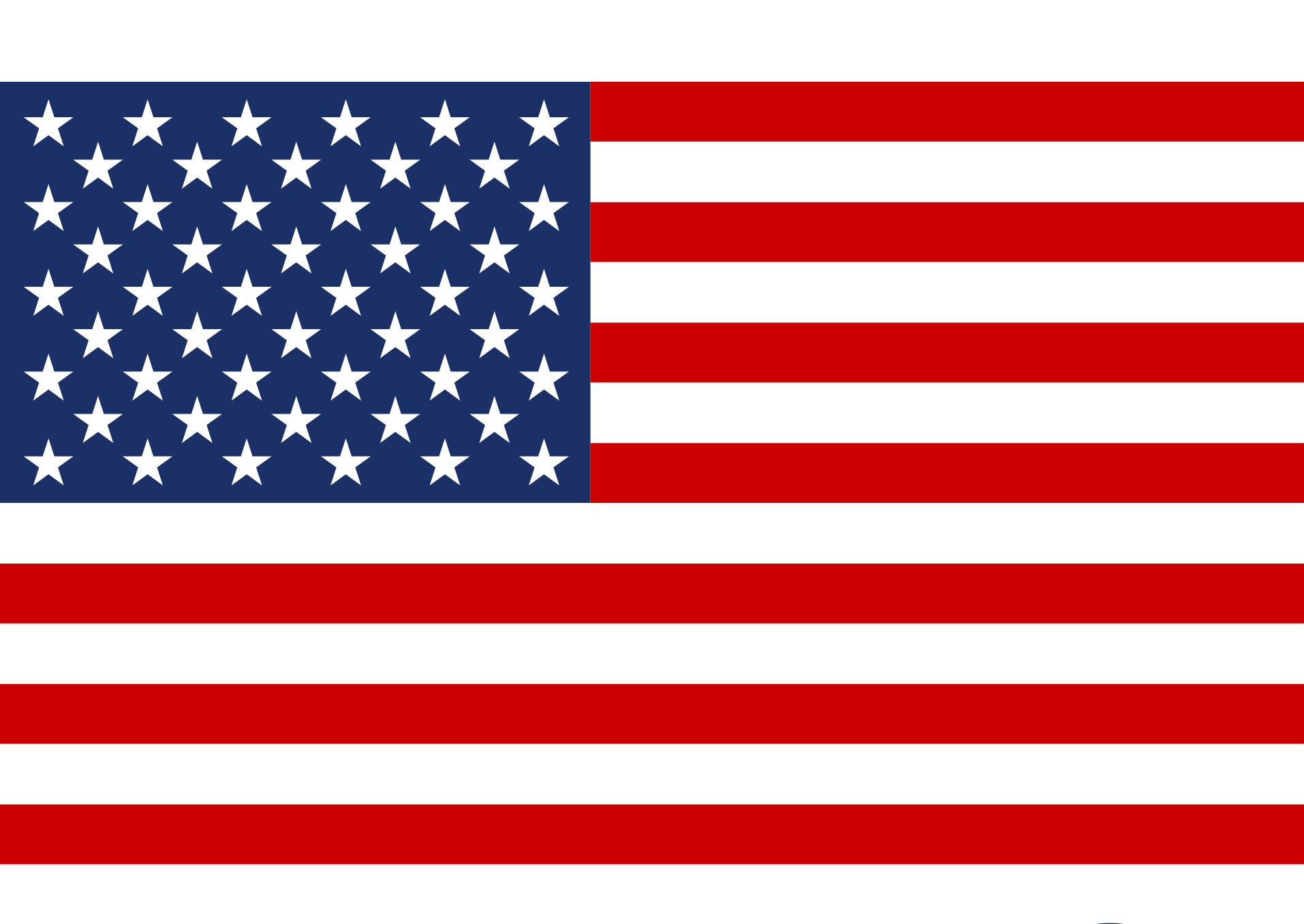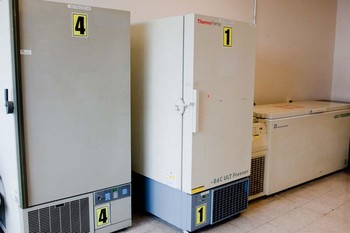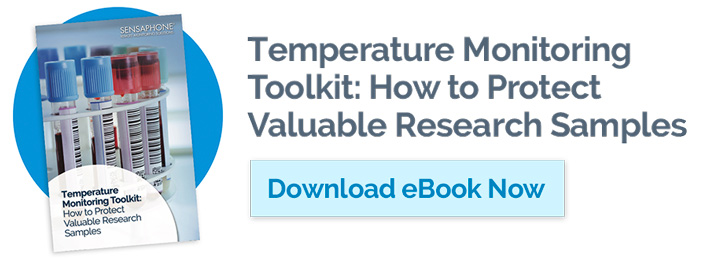Imagine investing years of time, energy and brainwork in medical research, only to have it ruined because the lab’s freezer lost power and its contents were destroyed. Lab managers who are responsible for the viability of research samples can’t leave storing them to chance. As commercial refrigeration expert Brian Barlow knows, a temperature monitoring system is imperative when storing crucial medical products. And it must be a system that can send immediate alerts when problems arise.
Too Important to Lose
Barlow Scientific provides biomedical refrigeration equipment and ultra-low temperature freezers to laboratories throughout the Raleigh, Durham and the Research Triangle Park areas of North Carolina. When it comes to furnishing medical and research laboratories with cold storage units and equipment, Barlow has been relying on Sensaphone’s WSG30 wireless temperature monitoring system and wired 800 devices for more than 15 years. Among Barlow Scientific’s customers are research institutions Duke University and North Carolina Central University, where its freezers are installed in dozens of medical laboratories. Temperature monitoring, immediate alarm notification and secure data logging are essential, because these units can contain decades of research and potentially hundreds of thousands of dollars in assets.
Barlow’s rule of thumb is simple: “If they are storing a product they cannot afford to lose, they must have some type of monitoring, because any type of equipment will fail at some point in its life. If the product is critical, we recommend a monitor, so lab managers will be notified in the event of an alarm in time to save their products.”
Helping to Maintain Regulatory Compliance
Many laboratories must undergo audits by their own institutions or outside regulators to ensure that essential inventory is stored properly. Manually monitoring and recording environmental parameters takes a significant amount of lab staff attention and detracts from other important workplace demands. However, the wireless monitoring devices automatically record data points, date and time for up to 67,000 samples. “Devices that record the temperature and keep logs make people’s jobs a lot easier,” Barlow explained.
At Work for the ‘Gene Hunters’
Barlow Scientific has a total of 40 base devices, monitoring a total of 300 sensors, deployed throughout Duke and NCCU. Julie Rochelle, lab manager at the Duke Molecular Physiology Institute, depends on the Sensaphone WSG30 wireless temperature monitoring system and wired 800 devices to double alarm the 22 cold storage units and eight tissue culture incubators that she oversees. Her research group conducts genetic studies for a wide range of disorders and diseases.
“We are what you would call gene hunters. We’re looking for genes that cause certain diseases, such as disorders of the eye, heart, kidney and brain. We look at people who have a disorder and compare them to people who don’t, and we start narrowing down regions where a gene might be causing the problem,” she explained.
Rochelle manages freezers that run at -20C (-4F) and -80C (-112F) and hold vital material for medical research: tissue, blood, plasma, genomic libraries (collections of DNA fragments of one organism cloned in an appropriate host), well plates (flat plates with multiple small wells each holding a piece of the DNA puzzle) and kits containing enzymes and various free agents needed for experiments.
“One experiment can cost hundreds of thousands of dollars. I had one principal investigator spend a million dollars at one time on reagents. That’s why we alarm these freezers,” Rochelle noted.
Safeguarding Irreplaceable Assets
But the cost goes beyond dollar figures. Often the genetic samples are one of a kind. “For example, our researchers might visit a family reunion to get samples to study a disorder that runs through the family. If you lose those, you might not be able to get another sample because people pass away, often from the disease that is being researched. These are precious, irreplaceable samples,” Rochelle added.
At times, the group’s work relies on individuals who donate their bodies to research after they die. Rochelle explained, “We’ve done research on Alzheimer’s patients and had to store the brains carefully. These people gave their bodies for science, and you have to take care of that gift.”
Rochelle relies on the level of detail she gets from the wireless WSG30, such as notifications sent to her pager and information provided online. “If I get a page for a freezer, I can look at the temperature for the past two to three hours, and I can see it has been going up steadily. That is a real problem. That is a freezer going down,” she said.
She also relies on the wired 800 devices, workhorses the lab has used since the late 1990s. “The wired monitor is tried and true. It has saved many a freezer. The -80 freezers run 24/7 in a room that is 22C (71.6F). Those guys work really hard, and they run for years and years. But when they go down, they go down in a big way. These Sensaphone monitors have saved the contents of a lot of freezers. We love them,” she said.


